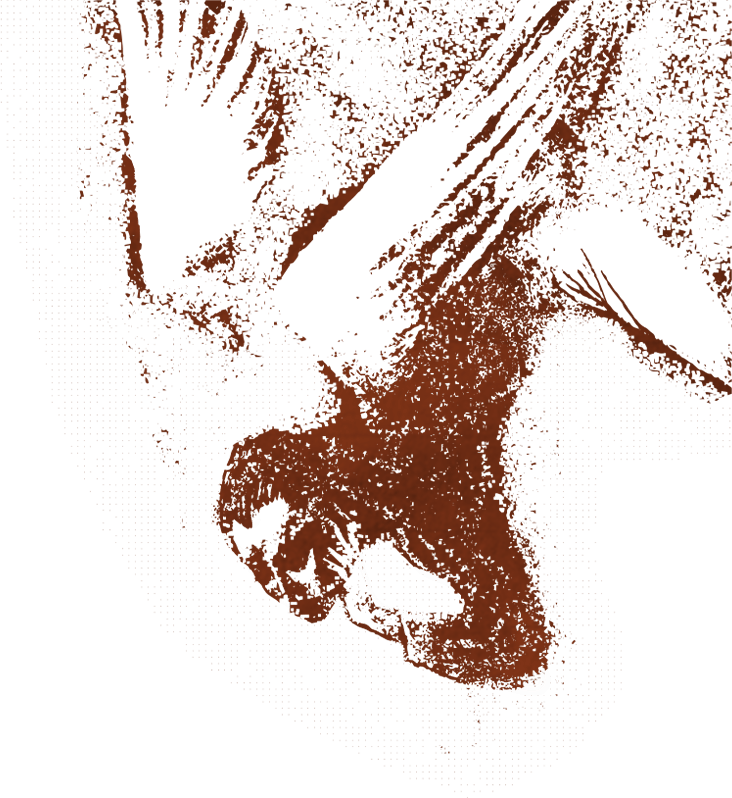by Ken Sehested
As people of faith gather for prayer and praise, the first act is that of interrogation.
How long, oh Beloved, will you permit envy and enmity to choke the soil of our land and souls?
Read more ›

I took part in organizing a silent worship service in the gallery of the U.S. Senate, while the legislators below us debated and voted for more funding for the war [in Vietnam]. When the vote was over… — David Hartsough
by Ken Sehested
As people of faith gather for prayer and praise, the first act is that of interrogation.
How long, oh Beloved, will you permit envy and enmity to choke the soil of our land and souls?
Read more ›This is a powerful book analyzing church growth patterns of the early church, using contemporary social-scientific theories suggested why people form new religious movements. It is a challenging account of the rise of Christianity.
‘Attachments lie at the heart of conversion, which means that conversion tends to proceed along social networks formed by interpersonal attachments’ (p 18). ‘Successful founders of new faiths typically turn first to those with whom they already have strong attachments’ (p 18), and people who are deeply committed to any particular faith do not go out and join some other faith’ (p 19).
The early church linked highly social ethical code with religion. According to Stark, Christianity served as a revitalization movement that arose in response to the misery, chaos, fear and brutality of life in the urban-Grecian world. Christianity revitalized life.
Read more ›Called and trained as an academic (New Testament), Senior was invited to the administrative position of president of the Catholic Theological Union in Chicago, a graduate school of theology; he came ‘to see both biblical scholarship and the work of administration as expression of (his) vocation as a Christian. Both (are) deeply rooted in the nature of the gospel and the mission entrusted to the church by the risen Christ’ (x-xi).
This book does not describe how ’to do’ administration but to see the intersection of the people of G-d with their exercise of administration. Administration, like preaching, teaching or healing, is also an expression of the gospel’ (xxi). The Gift of Administration is not a ‘how to’ book but a ‘why’ book, the Christian rationale for the work of administration (xxvii).
Senior’s giftedness in New Testament thinking provides powerful biblical insight into the area of administration (whether this would be the large scale, ie president or dean roles, or the pastoral calling. (One chapter deals with the myth of the church’s change from that of an original, purely spiritual charismatic and non-institutional church degrading into an institutional church essentially alien in form and spirit from the church Jesus intended’ (p 222).
Read more ›She was a social activist, totally non-religious. Worked in Mexico and El Salvador, then taught in a Baltimore ‘free school’, worked in New York restaurants and got a job with a left wing magazine’ in San Francisco. One morning she walked into St Gregory’s, an Episcopalian congregation.
‘I had no earthly reason to be there,’ she writes (p 57). ‘We sat down and stood up and sat down, waited and listened. ‘Jesus invites everyone to his table,’ a woman announced. And then we gathered around that table … and someone was putting a piece of fresh, crumbly bread in my hands, and handing me the goblet of sweet wine, saying ‘The blood of Christ’, and then something outrageous and terrifying happened. Jesus happened to me’ (p 58); the heart of Christianity: communion (p 74).
‘These people opened the door to grace—not because they had good taste, not because they were rich or intelligent or even always likable. They had let G-d in and now they were committed to letting in clueless and unprepared strangers like me because they believed in the absolute religious value of welcoming people who didn’t belong’ (p 81).
Read more ›Theissen defines religion as a cultural sign language which corresponds to an ultimate reality and promise of a gain in life (p 324), a definition he expands on (pp 2-7). It is a semiotic, an objective sign system, making the world a habitable home that is then interpreted.
This interpretation of the world around us utilizes myth (explain what fundamentally determines history; in the Bible it’s the myth, the narrative, of the fundamental acts of G-d, rites (patterns of behaviour in order to depict what is happening in the myths; the first Christians developed a religious sign system without temple, without sacrifice, without priests), ethics (examine how the emphasis on Torah (law) continues in the Christian story).
Religion, a sign language, also has a systematic character, giving expression, eg to the denominational emphases (whether there is an altar, what is ‘on’ the altar). When the religion gives way to another how do these changing signs reflect faithfulness to the original story (eg eating meat sacrificed to idols)? And religious signs are a cultural phenomenon, produced by human beings, eg the theory of Christianity will be influenced by change. Intriguingly, such changes are brought about by charismatics, independently of pre-existing authority roles and traditions.
Read more ›It’s an old book, first published in 1992, but a treasure I found once more illuminating and insightful. Theissen attempts ‘a history of the synoptic tradition from its oral prehistory to the time when it was written down in the gospels’ (p 2) to identify where and when the sources originated, both small units and text segments ,with attention to cultural context.
Three foci are identified. (1) An oral Jesus tradition (eg Luke 1:1-4), John 21, talking about the many stories circulating about Jesus; Papias’ collection of oral traditions about Jesus, Paul’s references (1 Cor 7:10,11; 9:14). (2) Small individual units (p 4), eg where the author of Matthew’s gospel placed the ‘Our Father’ within a series of associated rules for religious devotional practice. (3) The oral prehistory of texts, eg the political dimensions of the texts, where ‘events in the political world intrude into the text world of the New Testament (p 7), eg the Jewish War of 70 CE.
The general history of Jesus’ period and the synoptic texts have few clear points of contact, eg the opposition to the emperor Caligula when he proposed erecting his own statue in the Jerusalem temple, or the major political upheavals of 8-70 CE with the climax in the Jewish war (localizable data).
Read more ›One of the groups identified in the synoptic gospels is the scribes, ‘who work in tandem with the chief priests in command of the Temple, and in turn collaborate with the Roman governors’ (p 9). Ben Sira, writer of Ecclesiasticus (a deuterocanonical writing), ‘represents scribes as serving the priestly aristocracy yet also as caught in the middle between those heads of the temple state and the Judean people’ (p 9).
The scribes ‘devoted themselves to intense learning of the spectrum of Judean cultural tradition, including Torah, prophets and wisdom of various kinds (p 11). The temple and the high priesthood were imperial instruments to maintain order and collect revenue in Judea.
‘The subordination of the Judean temple state to imperial rulers (Hellenistic and Roman) set up several major conflicts that involved Judean scribes: the idea of G-d as the ruler of the Judean people and the reality of imperial role; subjection of the temple-state to imperial rules set up potential conflicts between rival factions (p 14).
Read more ›Raised in Egypt and teaching for forty years in institutes in Egypt, Lebanon, Jerusalem and Cyprus, Bailey has tried to understand the gospels more adequately in the light of Middle Eastern culture.
The written sources he considers are ancient, medieval and modern. The ancient sources linguistically are Aramaic, Hebrew, Syriac and Arabic. The early Christian tradition was not only Greek and Latin; Syriac was the third international language of the early church (p 11). The Arabic Christian tradition became important in the eighth century, and Bailey draws on key Arabic theologians of the middle ages; he focuses on Arabic new testaments; ‘translations are always interpretation and they preserve an understanding of the text that was current in the church that produced them’ (p 13).
Bailey’s essays ‘not only focus on culture but also on rhetoric’ (p 13). He attempts ‘to identify new perspectives from the Eastern traditions’ (p 21), drawing from the Arabic speaking world.
Read more ›Bauckham presents a telling argument for a paradigm that examines the gospels, a paradigm that does not depend on form criticism analyses but that looks at the gospels as eyewitness accounts conveyed by oral tradition. ‘Mark’s gospel was written well within the lifetimes of many of the eyewitnesses…’ (p 7).
The period between the ‘historical Jesus’ and the gospels spanned not by anonymous community transmission but by the continuing presence testimony of the eyewitnesses…. In imagining how the traditions reached the Gospel writes, not oral tradition but eyewitness testimony should be our principal model (p 8).
Eyewitness reliability (testimony) provides a more reliable basis for the gospel’s meaning than the skepticism about oral traditions (a la Bart Ehrmann) provides. ‘The ideal eyewitness (for Greek and Roman historians) was not the dispassionate observer but one who, as a participant, had been closest to the events and whose direct experience enabled him to understand and interpret the significance of what he had seen’ (p 9). (ie the criterion used in part for canonical decisions made regarding the common scriptures.)
Read more ›How did the early Christian church manage to win its dominant place in the Roman world? Consensus is that Christianity revitalized life, in response to the misery, chaos, fear and brutality of life, providing new kinds of social relationships (eg Rodney Stark).
MacMullen takes a less kindly tone in attempting to identify reasons for conversion, eg mass ‘conversions’ of Bedouin at a monastic site (p 2-3). Conversion is the change of belief by which a person accepted the reality and supreme power of G-d and determined to obey him (p 5). Immersed as we are in the Judaeo-Christian heritage, we hold that religion means doctrine, and that conversion to Christianity involves rational and intellectual criteria.
Roman religion did not share this; it was characterized by undisturbed religious toleration, and worship was basically a self-interested activity to gain favour from powerful beings (p 13). Christianity demanded a choice. Jesus was not just a new deity to add to the already crowded pantheon, but the Great G-d, at war against all rivals. And the teaching was that of monotheism, evidenced by widespread exorcism, showing the superiority of Jesus (cf John 20:30), an exchange of views ‘about wonderful cures wrought by this or that divine power’ (p 40).
Read more ›Subscribers receive full access to the entire prayer&politiks site. It’s free. Each week you will receive an automated email with a link to the new edition of the Signs of the Times column. All you provide is you name, email address and city, state or province, and country. This information is never shared with any other party. The only other agreement you make is to receive two solicitation letters per year, one in the spring, the other in the fall. (Which you are free to ignore. Your subscription is still free, and you may “unsubscribe” at any time.) This is our modern begging-bowl. Contributions are our sole source of support.